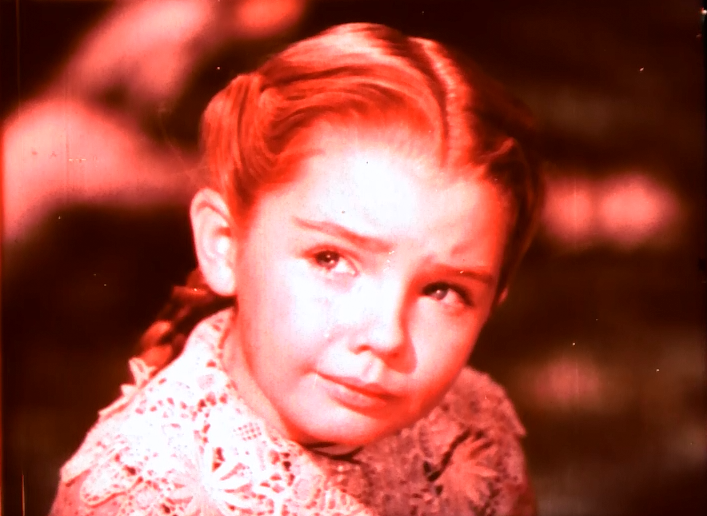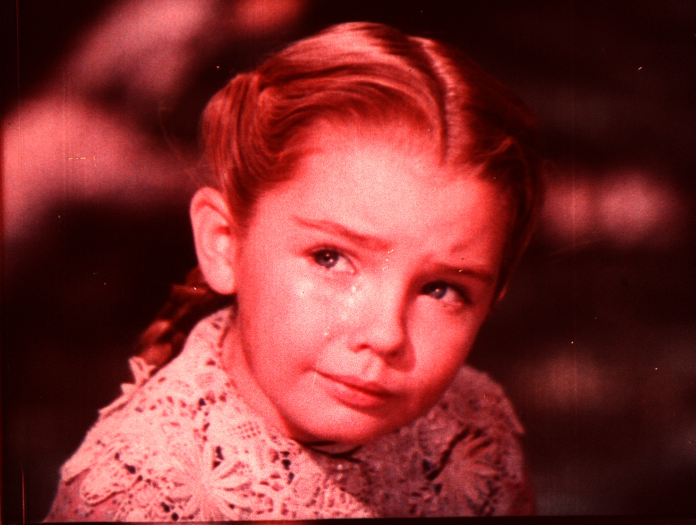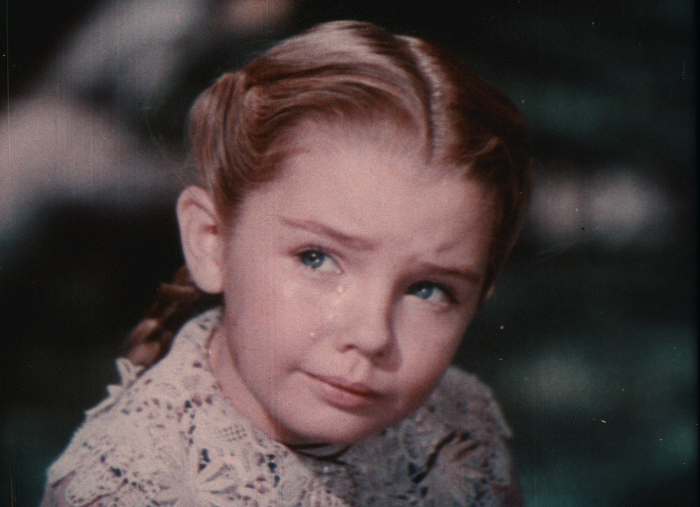Remember these are all compressed 8 bit images, the capture happens in log12bit or 16bit linear, so you have a lot more control when colour correcting.
As the OP doesn't have extensive colour correction experience, I am trying to make the job as easy as possible by getting the colour range closer to the desired output at the capture phase, and eke as much colour in each channel out as possible.
With a RAW scan using a standard LUT for the film stock in question, you could *possibly* get a better result than with the modified LUT, but starting from a more difficult place. Plus sometimes adjustments can be done in the analogue domain that lead to results impossible to get once the image is digitised. I am just experimenting so am open to ideas on this.
Anyway, some examples of what is happening.
This is how the image looks projected. \/

This is what it looks like scanned using a LUT designed for that film stock, but expecting that the film has not faded. \/

This is how the film looks with individual lighting channel colour control and a modified LUT \/
I want to stress that this is how it comes out of the scanner, no 'post' processing has been done. If you then post process the image, I'm sure it can be improved greatly.